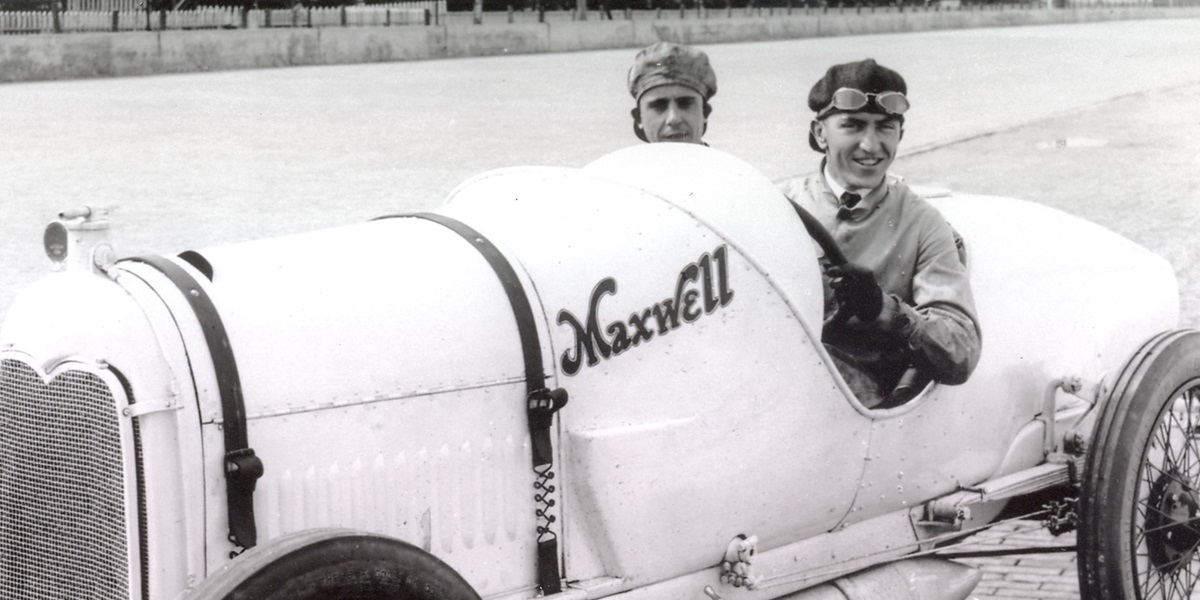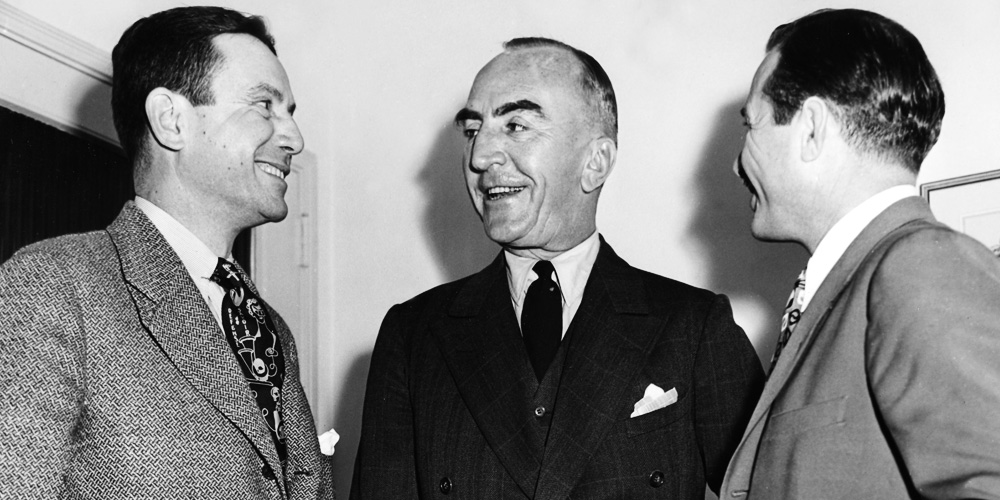
Former IMS Owner Rickenbacker Achieved Stardom as America's First Aerial Ace
August 19, 2017 | By Paul Kelly, Indianapolis Motor Speedway
Eddie Rickenbacker is known to many fans of motor racing and the Indianapolis Motor Speedway as a prominent race driver in the 1910s and the leader of the ownership group of IMS from 1927 through 1945.
But Rickenbacker’s greatest universal acclaim came from becoming America’s “Ace of Aces” for his success in aerial combat against the Central Powers in 1917-18 during World War I.
The great irony of Rickenbacker’s aerial exploits is that he didn’t know how to fly a plane until he volunteered to go to Europe in 1917 to fight in the war. In fact, his first airplane ride didn’t take place until 1916, after he had earned notoriety as one of America’s top race drivers.
Rickenbacker was born as Edward Rickenbacher to German-speaking Swiss immigrants in 1890 in Columbus, Ohio. He was a daredevil as a child and teen, escaping numerous near-death experiences, including riding a cart down a slope into a nearby mine. The cart flipped and nearly crushed Rickenbacker and his friends.
After his father died suddenly in 1904, Rickenbacker quit school and took on various jobs to help support his family. He was fascinated by machines and gravitated toward any kind of work in the nascent American automobile industry.
In 1906, Rickenbacker went to work as a 16-year-old for Lee Frayer, a race driver and the head of the Frayer-Miller Automobile Company in Columbus, Ohio. Frayer took a liking to the thin teen and employed him as a riding mechanic when Frayer competed in auto races.
Frayer and Rickenbacker raced in the inaugural Indianapolis 500-Mile Race in May 1911. Rickenbacker was the riding mechanic in Frayer’s No. 30 Firestone-Columbus entry and also drove relief during the race for Frayer. They teamed up to finish 13th among the 40 starters.
That stint at Indianapolis helped to launch Rickenbacker’s driving career. He made four “500” starts between 1912 and 1916, with a best finish of 10th in 1914.
Rickenbacker also was one of the early “barnstormer” drivers who competed at tracks around the country, as he won seven races in 1913. But his best year as a driver arguably was 1916, his last behind the wheel.
He started second in the Indianapolis 500 and led the first nine laps before a steering problem relegated him to a 20th-place finish. After that mechanical gremlin eliminated him from the race, Rickenbacker drove in relief for teammate Pete Henderson and guided the car to a sixth-place finish.
Rickenbacker finished third in 1916 in the AAA championship that year behind Indianapolis 500 winner Dario Resta and Johnny Aitken, beating 1915 “500” winner Ralph De Palma in the standings.
But the drums of war started to beat in a loud rhythm for America in 1916 despite its isolationist stance since the conflict started in 1914.
Rickenbacker saw flying as a natural extension of his skills as a race driver, accustomed to grace under pressure at high speeds and in tight confines.
His first flight came in November 1916 as he prepared for the Vanderbilt Cup race in California, taking to the skies in a plane flown by American aviation pioneer Glenn Martin, who already had formed an aircraft manufacturing company that is known today as Lockheed Martin.
That flight helped to ignite Rickenbacker’s dream to fly. When he volunteered for military service after the U.S. entered World War I in 1917, changing the spelling of his last name to appear less Germanic, he wanted to become a fighter pilot.
But there were two problems. One, candidates for U.S. Army pilot school needed a college degree. Rickenbacker had quit school in his early teens after his father died. Two, the age limit for pilot school was 25, and Rickenbacker was 27.
Rickenbacker persisted. He achieved permission to enter flight school and passed flight school in just 17 days. He was assigned to the 94th Aero Squadron in France.
Despite many brushes with death from crash landings and enemy bullets, Rickenbacker recorded 26 confirmed kills, more than any other American pilot. American media christened him the “Ace of Aces.”
Rickenbacker returned to America from the war with many offers to act in Hollywood or vaudeville due to his fame. But he decided to pursue his original loves of engineering and automobiles instead of aviation.

He started the Rickenbacker Motor Company in 1922. His bond to the Indianapolis 500 was restored when he drove the Pace Car before the 1925 race. Rickenbacker also joined the board of directors for the contest board of the American Automobile Association (AAA) in 1926, then the sanctioning body for auto racing in the United States, including the Indianapolis 500. He quickly was named chairman of the board.
Then in the fall of 1927, a group of associates led by Rickenbacker purchased the Indianapolis Motor Speedway for $750,000 from original IMS founders Carl Fisher and James Allison.
Rickenbacker was very hands-on in his early days of ownership at IMS. An avid golfer, he spearheaded the creation of the Speedway Golf Course – now Brickyard Crossing Golf Course – in 1929. He also worked to create a new set of specifications for Indianapolis 500 cars introduced in 1930 that spawned more manufacturer involvement in “The Greatest Spectacle in Racing.”
Other hallmarks of Rickenbacker’s early ownership included the return of riding mechanics to the race in the early 1930s, the introduction of warning lights around the oval and mandatory helmet use by drivers in 1935, the institution of the rookie driver’s test in 1936 and a gradual asphalt paving of the brick surface of nearly the entire oval except for the front straightaway.
By the mid-1930s, Rickenbacker was less involved in the day-to-day operations of IMS, as he became the head of Eastern Air Lines in 1935.
Rickenbacker decided to close IMS after America entered World War II in December 1941, preferring that the raw materials and fuels used in the race be devoted toward the Allies’ war effort.
The Speedway’s golf course remained open during World War II, managed by Rickenbacker’s brother Al.
Eddie Rickenbacker’s formal connection with IMS ended Nov. 14, 1945, when he sold the facility to Terre Haute, Indiana, businessman Tony Hulman for $750,000.